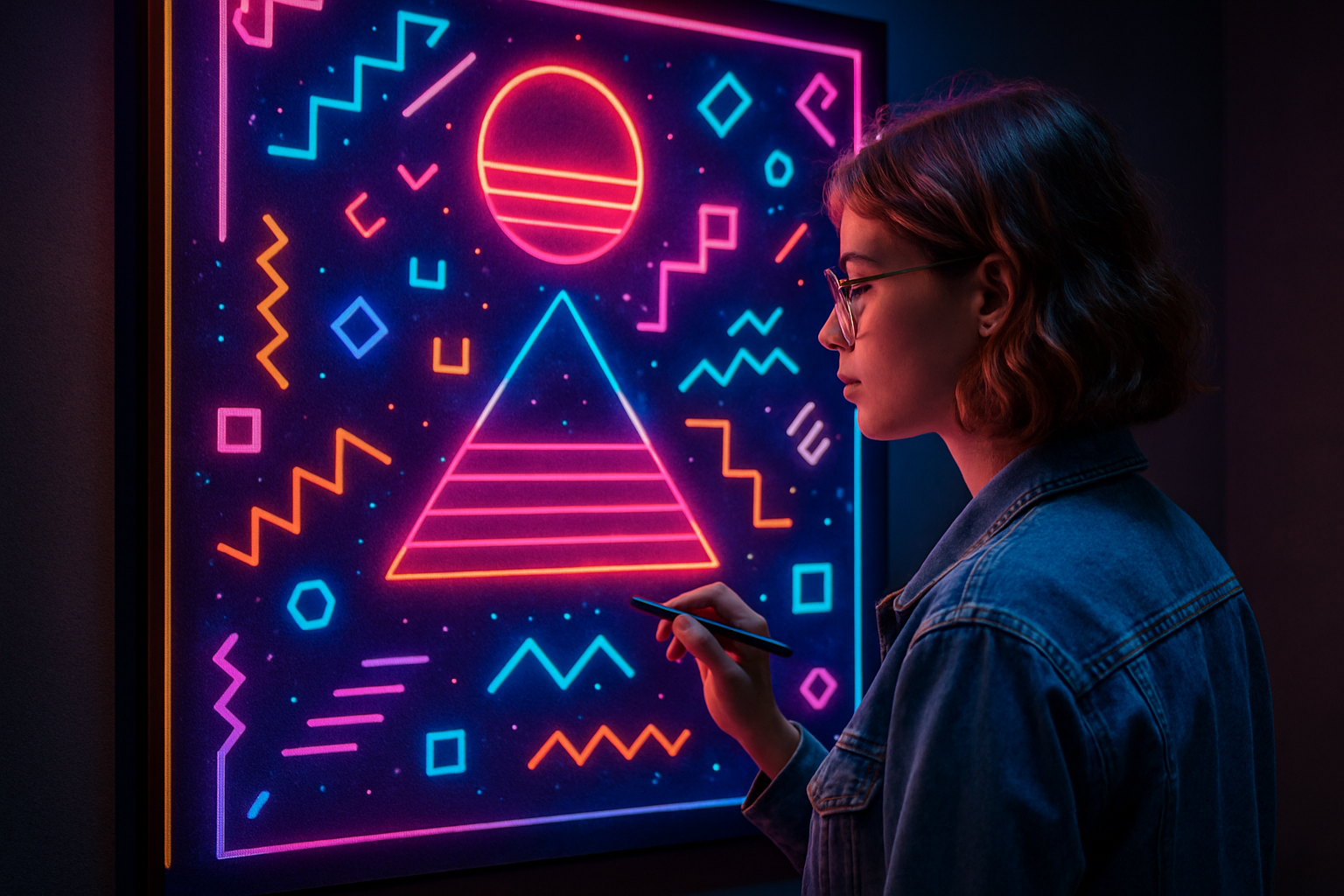Neon Nostalgia: Retro Aesthetics in Modern Digital Art
In an era dominated by sleek minimalism and cutting-edge technology, a vibrant counter-movement is emerging in the digital art world. Artists are embracing the bold colours, geometric patterns, and nostalgic vibes of the 1980s and early 1990s, creating a unique fusion of retro aesthetics and contemporary digital techniques. This resurgence of neon-soaked, synthwave-inspired art is captivating audiences across various mediums, from social media to gallery exhibitions, and even influencing mainstream visual culture.

Synthwave: The Soundtrack of Digital Nostalgia
Closely tied to the visual aesthetics of digital retro art is the musical genre of synthwave. This electronic music style, characterised by its heavy use of synthesizers and drum machines, draws inspiration from 1980s film soundtracks and video game music. The symbiotic relationship between synthwave music and retro digital art has created a cohesive audiovisual experience that transports audiences to an idealised version of the past.
Key Visual Elements of the Movement
Neon colours, particularly hot pinks, electric blues, and vibrant purples, dominate the palette of retro digital art. These are often contrasted against dark backgrounds, creating a striking visual effect reminiscent of neon signs. Geometric shapes, especially grids and wireframes, are frequently used to evoke the early days of 3D computer graphics. Sun motifs, palm trees, and other symbols of 1980s pop culture also feature prominently in many works.
Tools and Techniques
While the aesthetics may be retro, the tools used to create these artworks are decidedly modern. Artists employ sophisticated software like Adobe Creative Suite, Blender, and Cinema 4D to achieve the look of vintage computer graphics with a polished, contemporary finish. Some artists even develop custom software or modify existing tools to recreate specific visual effects from the past.
Impact on Popular Culture
The influence of retro digital art extends far beyond niche art communities. Major brands have adopted elements of this aesthetic in their marketing campaigns, tapping into the nostalgia factor to appeal to millennials and Gen Z consumers. The style has also made its way into mainstream entertainment, influencing the visual design of TV shows, films, and video games set in the 1980s or alternate retro-futuristic universes.
Critiques and Controversies
As with any artistic movement, retro digital art has its critics. Some argue that the style relies too heavily on nostalgia and lacks substance beyond its flashy visuals. Others contend that the romanticisation of the 1980s glosses over the problematic aspects of that era. These debates have sparked interesting discussions about the role of nostalgia in art and the responsibilities of artists when referencing historical periods.
The Future of Retro
As paradoxical as it may sound, the future of retro digital art looks bright. The movement continues to evolve, with artists finding new ways to blend vintage aesthetics with cutting-edge techniques. Virtual and augmented reality technologies are opening up exciting possibilities for immersive retro-inspired experiences. As long as there’s a desire to revisit and reimagine the past, retro digital art will likely remain a vibrant and influential force in the contemporary art world.




